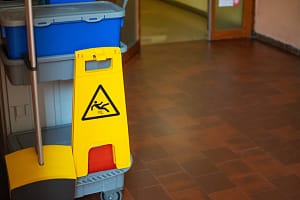When it comes to collisions, the highest price we pay is the all-too-common loss of life. The National Safety Council estimated that there were 38,800 fatal car crashes in 2019. An average cost of $4,538,000 is tied to each death.
Meanwhile, incapacitating injuries generate around $230,000 in expenses. Minor incidents can cost uninsured drivers nearly $10,000. Back in 2014, the National Highway Traffic Safety Administration (NHTSA) placed the total loss of life and productivity from motor vehicle accidents in the US at almost $1 trillion.
Whether it’s a simple fender-bender or something more severe, the subsequent financial impact can be catastrophic. You may also have to deal with injuries, work problems, and legal challenges. No burden is worth bearing for the sake of texting behind the wheel, speeding to your destination or failing to perform routine maintenance.
These are some of the primary causes of car crashes as identified in NHTSA reports. Let’s take a closer look at all of the leading factors and discuss how they can be avoided.
Human error
As the reason for 94% of road accidents, almost every collision is due to a decision made by the driver. This can occur before you even start the engine – inebriation being an obvious example. According to the Centers for Disease Control and Prevention (CDC), around 29 lives are lost each day to drunk driving.
Human error also includes:
- Tailgating
- Exceeding speed limits
- Making unsafe lane changes
- Not indicating when turning
- Reckless or aggressive behavior
Another major factor is fatigue. Drowsiness, sleep deprivation or downright exhaustion greatly impairs driving ability. Your skill in discerning, responding, and reacting to road conditions lessens when you’re tired. Taking public transport or finding a different way home after working long hours may be a life-saving choice.
Distracted driving
While part of human error, distracted driving requires its own section. The problem has consistently led to more collisions than any other factor. Data from 2016 presented an average of over 1,000 daily injuries from crashes involving distracted drivers. It’s no less of a threat today, especially with the increase in technology usage.
Aside from calling, messaging or otherwise using your phone when operating a vehicle, distracted driving involves virtually any other activity that draws your attention. They’re categorized into three main types:
- Visual (taking your eyes off the road)
- Manual (letting go of vehicle controls)
- Cognitive (focusing on something else)
Eating, drinking, reading, grooming, interacting with the radio, reaching for an item, and arguing with passengers are common examples. You can reduce distracted driving in a few simple steps. If you have an aspiring teen driver in the family, make sure that they join you in learning the following measures:
- Keep phones on silent and use hands-free features or voice assistants
- Adjust media and climate control settings in advance
- Consider any medications that make you drowsy
- Finish all food and beverages before leaving
- Set an example when with passengers
- Avoid gazing at scenery or accidents
- Don’t drive when highly stressed
Night driving
Navigating poorly lit roads after sunset is annoying at best. It can also be incredibly dangerous. Our human eyes are not calibrated particularly well for the task. Peripheral vision and depth perception is diminished greatly, along with the ability to distinguish color. Here are some tips for staying safe in the dark:
- Try not to look at oncoming high beams
- Clean and adjust all mirrors when stationery
- Aim your headlights correctly and wipe off any grime
- Keep all windows clean (newspaper can quickly remove residue)
- Dim the instrument panel and media screen when possible
- Look out for eye reflections when driving in areas with animals
Lack of preparation
How often do you check your vehicle? When last have you inspected the components? Many people never do.
Start with the brakes, which are a major contributor to accidents caused by mechanical issues. Dirty or worn-out brake pads should be addressed sooner rather than later. Your ability to stop in time depends on it.
The same is true for your tires, which should be checked for any tears, bulges or air leaks. Make sure that they’re pumped to the correct pressure and the grooves are deep enough. If they’re wearing out unevenly, an alignment or rotation problem is likely to blame and should be assessed by a technician.
Don’t forget about your lights, which can put both yourself and others in danger when defective. While neglected fluids are more likely to cause a nasty repair bill than an accident, it’s still wise to regularly inspect your car’s:
- Oil
- Brake fluid
- Transmission fluid
- Power steering fluid
- Coolant or antifreeze
On the topic of staying prepared, the importance of protecting your financial and physical well-being with a reputable car accident lawyer and suitable car insurance policy cannot be understated. No matter how safely you drive, the risk of getting into a collision with other motorists remains. It’s simply unavoidable.
What matters is how ready you are for potential incidents. Having car insurance protects you from losses related to medical bills and property damage. This is solidified by an attorney, who will handle the claims process and ensure that you’re compensated fairly. They will also help you file or defend any lawsuits related to car accidents.
External factors
Did you know that over the past five years, pothole damage has cost owners $15 billion in vehicle repairs? This comes from the American Automobile Association, whose study also found that drivers pay an average of $300 to make the necessary fixes. Of course, poorly maintained roads can result in more expensive accidents.
Another external cause of many car crashes is weather conditions. Rain and snow affect traction, while fog and strong winds can add their own element of danger. Believe it or not, construction sites are known to be responsible for collisions as well. Avoiding these factors naturally comes down to paying attention.
Even the smallest changes to your driving habits can make a world of a difference. Give some thought to these factors and set the example when traveling with others. Your efforts may just save a life.






Leave a Comment